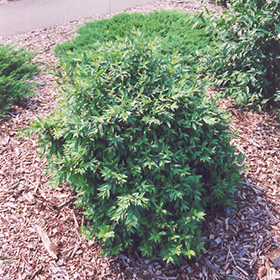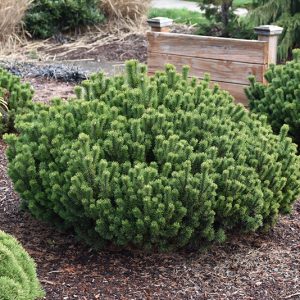Description
Growth & Care
| USDA Plant Hardiness Zone | 3b |
| Growth Rate | Fast |
| Recommended Pruning Method | Can Prune At Anytime |
Foliage
| Foliage Type | Deciduous |
| Plant Form | Arching |
| Foliage Markings | Undersides |
Flowers
| Flower Period | Summer |
| Flower Color | White |
| Flower Fragrance | Unscented |
Additional Categories
| Additional Category | Coralberry |
| Landscape Application | Massing, Garden, Naturalizing |
Details
Planting & Growing
Candy™ Coralberry will grow to be about 3 feet tall at maturity, with a spread of 3 feet. It tends to fill out right to the ground and therefore doesn't necessarily require facer plants in front. It grows at a fast rate, and under ideal conditions can be expected to live for approximately 15 years.
This shrub performs well in both full sun and full shade. It is very adaptable to both dry and moist locations, and should do just fine under typical garden conditions. It is not particular as to soil type or pH. It is somewhat tolerant of urban pollution. This particular variety is an interspecific hybrid.
Landscape Attributes
Candy™ Coralberry is a dense multi-stemmed deciduous shrub with a shapely form and gracefully arching branches. Its average texture blends into the landscape, but can be balanced by one or two finer or coarser trees or shrubs for an effective composition.
This shrub will require occasional maintenance and upkeep, and can be pruned at anytime. It is a good choice for attracting birds to your yard, but is not particularly attractive to deer who tend to leave it alone in favor of tastier treats. Gardeners should be aware of the following characteristic(s) that may warrant special consideration:
Suckering
Candy™ Coralberry is recommended for the following landscape applications:
Mass Planting, General Garden Use, Naturalizing And Woodland Gardens
Ornamental Features
Candy™ Coralberry is primarily grown for its highly ornamental fruit. It features an abundance of magnificent hot pink berries from early fall to late winter. It features subtle white bell-shaped flowers with pink overtones along the branches in early summer. It has bluish-green foliage with grayish green undersides. The oval leaves do not develop any appreciable fall color.





